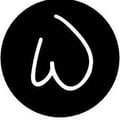An ‘observation’ is being able to observe each child while collecting information that has clear learning intention and dispositions.
“No two people will see the same child in identical ways. Open and honest educators can be asked to observe the same child. What they see and interpret will depend on what they decide to look for and their own particular perspectives”. (Martin, S Take A Look, 2007).
📣 Observation visual guide.
What is an observation?
Documentation as an important part of your work with children and families. and as part of a cycle of observation, analysis, planning, implementation and reflection. it is a valuable way that captures children’s voices and ideas through planning, documentation and evaluation.
Observations are a form of documentation to gather information about an individual child or a group of children, they are built on a form of analysis of the learning activities that are implemented.
Observations can take place during every day routines, as the child interacts with their peers through activities, or during spontaneous learning throughout the day with a small/large group of children or through solitary play, it includes listening and capturing children’s conversation and communication.
The value of watching and listening to children:
- If I watch the children play, I can discover their interests.
- By observing children, I can assess their developmental levels.
- I look to see what strategies children use to attain their goals.
- Observing children helps me know what skills the children need to practice.
- When I observe children at play, I learn a lot about their personalities.
We can learn at least five attributes of our children when we observe them closely:
- Their interests and preferences.
- Their levels of cognitive and social development.
- Their strategies for creating desired effects Their skills and accomplishments.
- Their personalities and temperaments
They are completed on Playground under the 'observation' tab on the left side, then select 'new'. (Please see below link to access how and where you can find this process)
You can also document observations on the reflection template, with using the data from parent partnership conversations through formal and informal meeting, through the QIP, and under the 'unfolding of learning' on the curriculum.
|
Individual goal: A minimum of 1 observation per child that links to the child's individual goal per fortnight. Group observations: A minimum of 3 group observation per week. |
Individual goal: A minimum of 1 observation per child that links to the child's individual goal per fortnight, use headings as a guide for you to follow (image below). When attaching photos, you will need to save them to the desktop you are planning on, and select 'attachments' to select images that link to individual focused observation.
Observations are a way of describing a child’s skills and abilities through their current knowledge, strengths, skills, abilities, interests, as well as their culture and background. It is a way to identify areas that require further learning and support and educators are to provide children with age appropriate strategies to support the child’s learning.
Before observing a child/ren it is important that as Early Childhood professionals we have purpose to what we are observing and ensure children’s learning is linked to a learning area/s to ensure clarity around the ‘intent'. Observing children requires carefully looking and analysing what the child is doing, listening to what the children are saying and allowing children to participate in experiences at their own pace with their learning based on their own intention without the interference of educator perspectives.
Interpreting Observations
Once the observation has been documented, you as the educator will need to make meaning of the child’s learning and understanding through what you have observed; interpret the observation you have written. Within any observation there could be a number of outcomes (EYLF or VEYLDF) that the child has achieved, remember the “purpose” and focus on using specific language to one or two outcomes through your interpretation.
Be objective – provide facts and details during the observation.
Avoid being subjective – do not add your opinions, personal experiences, thoughts or judgements when writing down observations.
| Australian Government Department of Education [AGDE] (2022). Belonging, Being and Becoming: The Early Years Learning Framework for Australia (V2.0) | EYLF V2.0 |
| Lorina. Observations in Childcare, 2015 retrieved from Aussie child network. | Observation resource. |
| Forman G, & Hall E, Wondering with Children: The Importance of Observation in Early Education. | Importance of Observation. |
Documents:

|
 |

|
